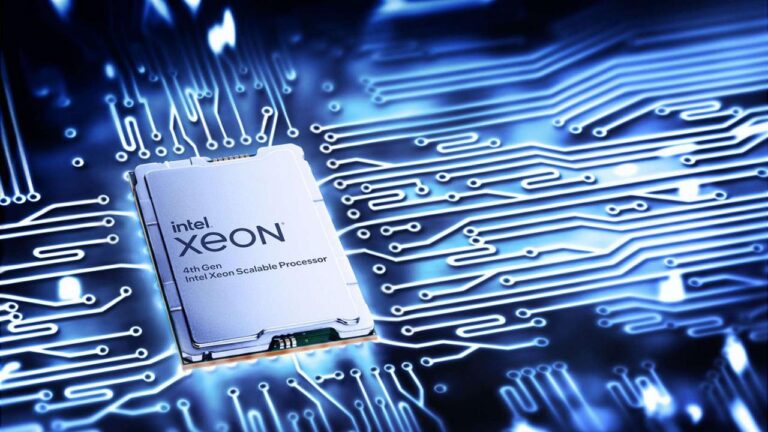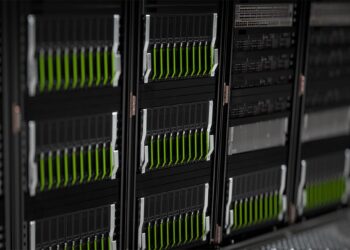In the vast and rapidly expanding universe of enterprise computing, where data volumes explode and computational demands intensify, the ability of server processors to grow with these needs is paramount. For decades, Intel Xeon processors have been the undisputed workhorses of data centers worldwide, powering everything from virtualization and cloud infrastructure to high-performance computing (HPC) and artificial intelligence (AI) workloads. The narrative of Intel Xeon scalability explored is a deep dive into the very core of what makes these processors so pervasive: their inherent design for growth, their adaptability to diverse workloads, and Intel’s continuous innovation to meet the ever-increasing demands for raw compute power and efficiency.
The Unseen Foundation of the Digital World

While the public often interacts with sleek devices and intuitive applications, the unseen foundation enabling this digital experience is the server infrastructure, and for a long time, Intel Xeon has been synonymous with this backbone. The demand for scalable computing is driven by phenomena such as:
- Explosive Data Growth: Every click, transaction, and sensor reading generates data that needs to be stored, processed, and analyzed.
- Virtualization and Cloud Adoption: Businesses are consolidating physical servers into virtual machines and migrating to public and private clouds, demanding processors that can efficiently host numerous virtual instances.
- Artificial Intelligence and Machine Learning: Training complex AI models and performing real-time inference requires unprecedented levels of parallel processing and memory bandwidth.
- Big Data Analytics: Extracting insights from massive datasets necessitates powerful processors capable of handling intense computational and I/O workloads.
- Enterprise Applications: Mission-critical applications like ERP (Enterprise Resource Planning), CRM (Customer Relationship Management), and large databases require consistent, reliable, and scalable performance.
Intel Xeon processors have continually evolved to address these challenges, pushing the boundaries of what’s possible within server architectures. Their design for scalability is not just about adding more cores; it encompasses a holistic approach to memory, interconnects, acceleration, and software optimization.
Pillars of Intel Xeon Scalability
Intel’s long-standing dominance and the inherent scalability of its Xeon processors are built upon several key architectural and strategic pillars.
A. Multi-Core and Multi-Socket Architectures
The foundation of Xeon’s scalability lies in its ability to pack numerous processing cores into a single chip and support multiple such chips within a single server.
- High Core Counts: Modern Intel Xeon Scalable processors (e.g., from the 3rd Gen Ice Lake to the 4th Gen Sapphire Rapids) offer a significant number of CPU cores per socket (up to 60 or more for top-tier models). This allows for massive parallel processing, crucial for running multiple virtual machines, containers, or threads within a single application.
- Multi-Socket Support: Xeon Scalable processors are designed to work seamlessly in multi-socket configurations (2-socket, 4-socket, and even 8-socket servers for high-end systems). This allows organizations to linearly scale compute power by simply adding more processors to a server, providing immense raw computational capacity for the most demanding workloads like large in-memory databases or HPC applications.
- NUMA (Non-Uniform Memory Access) Optimization: With multi-socket configurations, NUMA architecture ensures that each CPU has its own directly attached memory bank, minimizing latency for cores accessing their local memory. Intel’s software and operating system optimizations ensure efficient workload distribution across NUMA nodes.
B. Memory Scalability and Bandwidth
Access to vast and fast memory is as crucial as core count for many scalable applications.
- High Memory Capacity: Xeon Scalable processors support a very large amount of DDR4 or DDR5 RAM per socket (e.g., terabytes per socket). This is vital for in-memory databases (like SAP HANA), big data analytics, and virtualization environments where large amounts of RAM are critical for performance.
- Increased Memory Channels: Each Xeon processor provides numerous memory channels (e.g., 8 channels for DDR4, 8-12 channels for DDR5), enabling extremely high memory bandwidth. This ensures that data can be fed to the processor cores at a rapid pace, preventing performance bottlenecks in data-intensive workloads.
- Persistent Memory (Intel Optane PMem): Intel pioneered persistent memory with Optane PMem, which acts as a hybrid between traditional DRAM and SSD storage. It offers near-DRAM speed with the persistence of storage, allowing for massive datasets to reside in memory, survive power cycles, and accelerate applications like databases, analytics, and virtualization by reducing reliance on slower storage I/O. This directly impacts scalability for memory-bound applications.
C. PCIe and I/O Connectivity
Efficient data transfer to and from storage and accelerators is paramount for server scalability.
- High PCIe Lane Count: Intel Xeon Scalable processors provide a generous number of PCIe lanes (e.g., 64 or more per socket), allowing for direct, high-bandwidth connections to a multitude of high-speed NVMe SSDs, network adapters (100/200/400 GbE), and essential AI accelerators (GPUs, FPGAs).
- Latest PCIe Generations: Intel has consistently adopted the latest PCIe standards (PCIe 4.0 and recently PCIe 5.0). PCIe 5.0 doubles the data transfer rate per lane compared to PCIe 4.0, providing immense I/O bandwidth for modern, data-intensive applications. This helps eliminate I/O bottlenecks and ensures that powerful accelerators can be fully utilized.
- Integrated I/O: Integrating key I/O controllers directly onto the CPU package reduces latency and simplifies server board designs, contributing to overall system performance and scalability.
D. Built-in Acceleration and Workload Optimization
Beyond raw cores, Intel has integrated specialized accelerators and optimized instruction sets directly into Xeon processors to enhance performance for specific workloads.
- Intel AMX (Advanced Matrix Extensions): Introduced with 4th Gen Xeon Scalable (Sapphire Rapids), AMX is a new built-in accelerator designed specifically to boost AI performance. It accelerates matrix multiplication operations, a core component of deep learning, directly on the CPU, making it more efficient for AI inference and certain training tasks without requiring dedicated GPUs for every workload.
- Intel DL Boost (Deep Learning Boost): Leveraging Vector Neural Network Instructions (VNNI), DL Boost accelerates deep learning inference, particularly for INT8 precision, providing significant performance gains for AI workloads compared to earlier generations.
- Intel QuickAssist Technology (QAT): For cryptography and data compression, QAT offloads these intensive tasks from the main CPU cores to dedicated hardware, freeing up CPU cycles for other computations and improving performance for secure communications and data processing.
- Intel Data Streaming Accelerator (DSA): Optimizes data movement between CPU cores, memory, and I/O devices, reducing latency and improving the efficiency of data-intensive applications.
- Intel In-Memory Analytics Accelerator (IAA): Speeds up analytics and database queries by accelerating compression/decompression for in-memory data.
- Intel SGX (Software Guard Extensions): While not a performance accelerator, SGX enhances security by creating trusted execution environments (enclaves) within memory, protecting sensitive data and code from compromise even from privileged software. This boosts the security scalability of workloads.
E. Software Optimization and Ecosystem Support
Hardware is only as good as the software that leverages it. Intel’s deep engagement with the software ecosystem is crucial for Xeon’s scalability.
- Extensive Software Ecosystem: Xeon processors benefit from decades of optimization by operating system vendors (Windows, Linux), hypervisor providers (VMware, Microsoft Hyper-V, KVM), database vendors (Oracle, SQL Server), and application developers across virtually every industry.
- OneAPI Initiative: Intel’s OneAPI initiative provides a unified, cross-architecture programming model that simplifies the development of applications that leverage various Intel hardware (CPUs, GPUs, FPGAs), making it easier for developers to optimize their code for Xeon’s diverse capabilities.
- AI Software Optimizations: Intel actively optimizes popular AI frameworks (TensorFlow, PyTorch) and libraries (OpenVINO, oneDNN) to extract maximum performance from Xeon CPUs, particularly for AI inference at scale.
- Virtualization Enhancements: Continuous collaboration with hypervisor vendors to enhance virtualization features, leading to higher VM densities, better performance isolation, and more efficient resource scheduling on Xeon-powered servers.
F. Reliability, Availability, and Serviceability (RAS)
For enterprise-grade scalability, reliability and ease of maintenance are non-negotiable. Xeon processors are built with robust RAS features.
- Error Correcting Code (ECC) Memory Support: Automatically detects and corrects most common types of internal data corruption, preventing system crashes and data loss.
- Redundant Power and Cooling Support: Xeon-based server platforms are designed to seamlessly integrate with redundant power supplies, hot-swappable components, and advanced cooling solutions, ensuring continuous operation.
- Processor Fault Detection and Recovery: Built-in mechanisms to detect and potentially recover from processor errors, enhancing system stability.
- Advanced Diagnostics: Comprehensive diagnostic capabilities allow for rapid identification and isolation of hardware issues, simplifying maintenance and reducing downtime.
- Platform Stability: Intel’s long history and large install base contribute to the maturity and stability of the Xeon platform, which is critical for mission-critical enterprise applications.
The Impact of Intel Xeon Scalability

The inherent scalability of Intel Xeon processors has had a profound impact across the entire IT landscape.
G. Foundation of Cloud and Virtualization
- Hyperscale Data Centers: Xeon processors are the backbone of most hyperscale public cloud data centers (AWS, Azure, Google Cloud), enabling the massive virtualization and multi-tenancy that define cloud computing.
- Private Cloud Infrastructure: Enterprises building private clouds rely on Xeon’s scalability to create agile, on-demand IT resources for their internal operations.
- High VM Density: The combination of high core counts, large memory capacity, and virtualization optimizations allows for exceptional VM density per physical server, maximizing hardware utilization and reducing data center footprint.
H. Enabling AI and Big Data at Scale
- AI Inference: Xeon processors, especially with built-in accelerators like AMX and DL Boost, are highly cost-effective and efficient for large-scale AI inference, particularly when deploying AI models across a vast number of servers in production environments.
- Data Pre-processing and Analytics: Xeon’s powerful general-purpose compute capabilities are ideal for data ingestion, cleaning, transformation, and large-scale analytical queries, complementing specialized AI accelerators.
- Integrated Solutions: Xeon-based servers can integrate seamlessly with GPUs (from NVIDIA or AMD) and FPGAs, forming powerful heterogeneous computing platforms for the most demanding AI training and HPC workloads.
I. Powering Enterprise Applications and Databases
- Mission-Critical Workloads: For traditional enterprise applications (ERP, CRM) and relational databases, Xeon’s balanced performance, reliability, and security features provide a robust and scalable foundation.
- In-Memory Computing: The ability to support vast amounts of fast memory makes Xeon ideal for in-memory databases like SAP HANA, enabling real-time analytics and transaction processing.
- Reliable Performance: Enterprises depend on Xeon’s consistent and predictable performance to ensure their critical business operations run smoothly, even under heavy load.
J. Total Cost of Ownership (TCO) Optimization
- Consolidation: The high core count and performance of Xeon processors enable greater workload consolidation, reducing the number of physical servers, leading to lower hardware acquisition costs.
- Energy Efficiency: While powerful, Intel continuously optimizes Xeon for performance per watt. Coupled with virtualization, this contributes to lower energy consumption for compute and cooling.
- Software Licensing: By consolidating workloads onto fewer, more powerful physical servers, organizations can often reduce software licensing costs that are tied to physical cores or sockets.
- Operational Efficiency: Robust management features, reliability, and extensive ecosystem support contribute to lower operational expenses over the lifespan of the servers.
Challenges and Future Trajectories
Despite its established leadership, Intel Xeon faces a dynamic and increasingly competitive market, along with ongoing technological challenges.
K. Increased Competition
- AMD EPYC: AMD’s resurgence with its EPYC processors has provided strong competition, particularly in terms of core count, PCIe lanes, and multi-socket TCO advantage for certain workloads. This competition has driven Intel to accelerate its own innovation.
- Arm-based Servers: The rise of Arm-based server processors (e.g., AWS Graviton, Ampere Computing) offers an alternative, particularly for cloud-native workloads, with promises of high performance and energy efficiency.
- Custom Silicon from Hyperscalers: Major cloud providers are increasingly designing their own custom AI accelerators and even general-purpose CPUs for their internal data centers, which could impact the broader market for merchant silicon.
L. Power and Thermal Management
- Increasing Power Draw: As processors pack more cores and accelerators, their power consumption increases, posing significant challenges for data center power delivery and cooling infrastructure.
- Thermal Density: Managing the heat generated by these powerful chips within server racks requires advanced cooling solutions, including liquid cooling.
M. Specialization vs. General Purpose
- AI Specialization: The growing demand for AI often leads to the adoption of highly specialized accelerators (GPUs, ASICs) that can offer superior performance per dollar for specific AI tasks. Intel’s challenge is to balance its general-purpose strengths with integrated AI acceleration to remain competitive.
- Workload-Optimized Processors: The market trend is towards more workload-optimized processors. Intel is addressing this with built-in accelerators and diverse SKU offerings for specific use cases.
N. Software Ecosystem Breadth (for new features)
While Xeon has a vast existing software ecosystem, ensuring rapid and widespread software optimization for Intel’s new architectural features (like AMX) and accelerators is a continuous effort.
O. Supply Chain Resilience
- Manufacturing Complexities: Producing cutting-edge processors at scale is incredibly complex and susceptible to global supply chain disruptions and geopolitical factors.
- Process Node Leadership: The race for process node leadership (e.g., 3nm, 2nm fabrication) is intense, and maintaining a competitive edge in manufacturing technology is crucial.
Conclusion
The Intel Xeon scalability explored reveals a rich tapestry of engineering innovation, strategic adaptation, and deep ecosystem collaboration. For decades, Intel Xeon processors have been the quiet giants, providing the reliable and highly scalable computational power that underpins the vast majority of the world’s digital infrastructure.
Despite increasing competition and the relentless pace of technological change, Intel’s continuous investment in Xeon’s architecture, its strategic integration of new accelerators, and its unwavering commitment to software optimization ensure that these processors will remain a foundational element of scalable computing. The future of data centers, cloud environments, and advanced AI will continue to rely heavily on the formidable and ever-evolving scalability offered by Intel Xeon processors, adapting to meet the demands of an increasingly intelligent and data-driven world.










